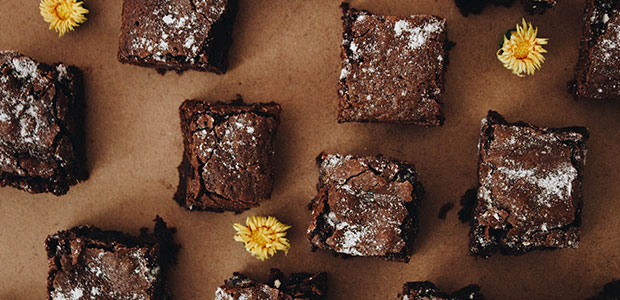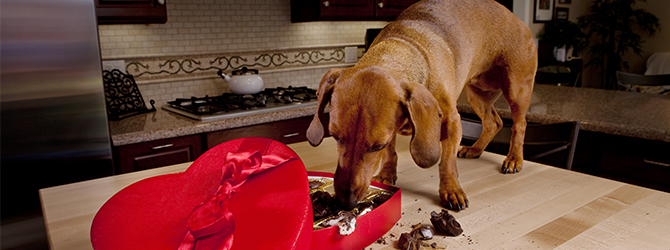Chocolate poisoning & what to do if your dog eats chocolate
2 min read
First Published: 22/10/2018
Last Updated: 14/12/2023
Chocolate is many humans’ favourite tasty treat but as a dog owner, it’s vital to remember that chocolate can be highly toxic to your canine companion.
Did you know that chocolate is one of the most common causes of poisoning in dogs, often leading to serious illness or even death?
Let’s take a look at why chocolate is poisonous to dogs, the symptoms of chocolate poisoning and perhaps most importantly, how best to keep chocolate out of your dog’s reach!
A brief summary…
- Chocolate contains an ingredient called theobromine that’s highly toxic to dogs
- Signs of chocolate poisoning include vomiting, diarrhoea and rapid breathing
- Cocoa powder and dark chocolate contain the highest levels of theobromine
- At home, keep all forms of chocolate away from your dog
- If your dog eats chocolate, contact your vet right away
Why can’t dogs have chocolate?
Chocolate comes from roasted cocoa beans. It contains two toxic substances: caffeine and theobromine. If your dog were to ingest either of these, there could be serious consequences.
All forms of chocolate are poisonous to dogs but raw cocoa powder and darker chocolate are more dangerous because they have a higher concentration of theobromine.
Signs of chocolate poisoning in dogs
Your dog might not show any signs of poisoning until 6-12 hours after ingestion. By then, it may have done some serious damage already. Contact your vet right away if you ever suspect that your dog has eaten chocolate - even if it’s just a small amount!
Clinical signs of chocolate/theobromine poisoning include:
- Sickness
- Diarrhoea
- Drooling
- Rapid breathing
- Increased temperature
- Increased heart rate
- Muscle stiffness or tremors
- Hyperactivity
- Low blood pressure (pale gums)
- Seizures
How much chocolate can a dog eat before they’re in danger?
The level of chocolate toxicity depends on three things: the type of chocolate, the amount of chocolate and the size & breed of your dog.
For example, a small Jack Russell who’s eaten an entire chocolate bar will be at a much greater risk than a breed such as a black Labrador who’s just polished off a small crumb from your kitchen floor.
That said, because of the risks, we strongly advise that you don’t feed any chocolate to any dog, no matter their size or breed.

Can dogs eat white chocolate?
Nope! Whilst the amounts of theobromine may not be as high in white chocolate, it’s still chocolate nonetheless. It still contains theobromine and is still a dangerous substance.
We recommend you stay on the safe side and keep chocolate of any form well out of your dog’s reach.
This includes:
- Cocoa powder
- Hot chocolate
- Chocolate bars of any kind
- Brownies
- Cookies
- Cakes
- Muffins
- Chocolate ice cream
How to keep your dog safe from chocolate poisoning
Dogs are dogs. They all like to eat things they shouldn’t eat – especially curious puppies. As their owner, it’s useful to know which substances are toxic to your dog so you can keep them out of their reach.
To protect your dog, take note of the following:
- Be careful when eating or handling chocolate
- Store chocolate somewhere your dog can’t reach
- Don’t leave chocolate or chocolatey treats lying around - even for a second
- Steer clear of chocolate Christmas tree decorations
My dog ate chocolate - what should I do?
If it’s not treated early, chocolate poisoning can lead to weakness, coma and even heart failure, so it’s vital to act fast if you’re suspicious. Call your vet or emergency care provider right away.
If you can, bring the wrapper with you. This will help your vet to understand exactly how much of each ingredient your dog has eaten.
Need more info?
For expert advice on keeping your dog safe from chocolate poisoning, have a chat with your local vet.
Find your nearest vet using our Find a Vet page, or speak to a vet online today.


